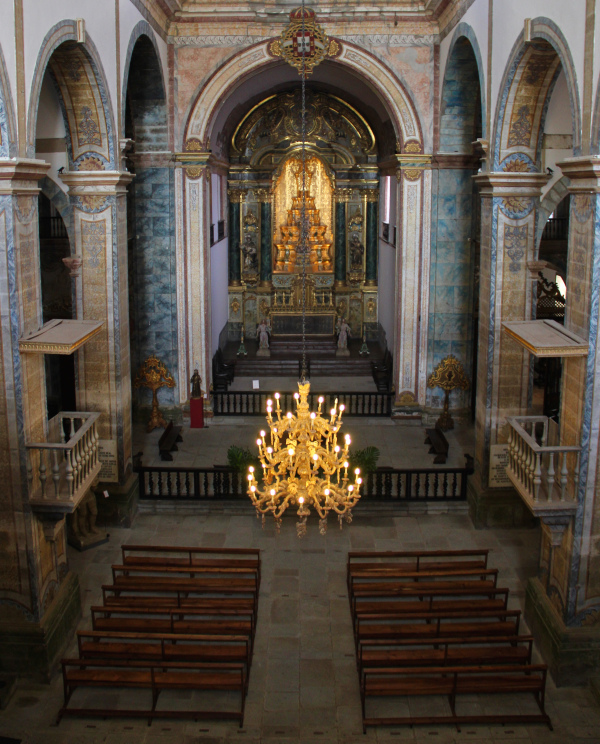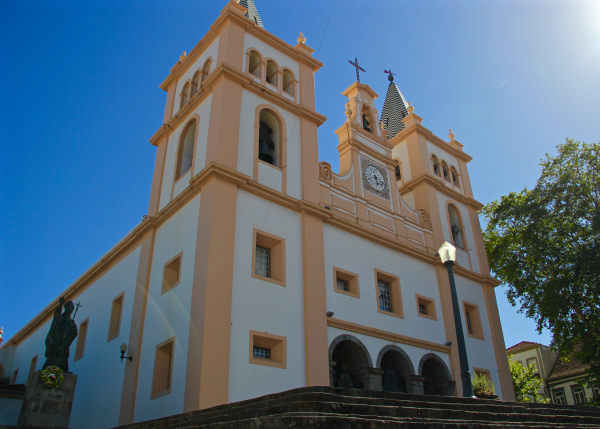We arrive on the island of Terceira and set off straight away for a walking tour of the city of Angra do Heroísmo.
Terceira is known as the ‘Lilac Island’ for its many hydrangeas, which turn lilac in colour due to the high iron content in the soil. The island is located around 145 kilometres from São Miguel our flight from Ponte Delgada took around 30 minutes. Terceira is the second most populated of the Azorean islands, with approximately 58,000 inhabitants, and the third largest in surface area.
Our first stop is the museum, situated within a former Franciscan convent of the seventeenth century, where we learn more about the city that has become a UNESCO world heritage site. The city centre is comprised of twenty long and wide cobbled streets that are bordered by beautiful houses, characterised by two main features. The first feature is that the terraced houses that line the streets have no front or back gardens. The second is that the majority of the whitewashed houses have two floors when seen from the front and three floors when seen from the rear.
In 1980 a violent earthquake shook the city of Angra do Heroísmo and damaged over 75% of the buildings. As the restoration of the city began its inhabitants decided to start the candidacy application process to add the city to UNCESCO’s World Heritage List. On the 7th of December of 1983, Angra do Heroísmo became the oldest Portugese city centre included on the World Heritage List and was considered a witness to the Age of Discoveries.
The city is directly and tangibly associated with an event of universal historical significance: the maritime exploration that allowed exchanges between the world’s great civilisations. Due to its location in the mid-Atlantic, the port of Angra is the eminent example of a creation linked to the maritime world within the framework of great explorers.
The port of Angra was set up as an obligatory port-of-call by Vasco de Gama in 1499 and Pedro de Alvarado in 1536 for the fleets of Equatorial Africa and of the East and West Indies during their voyages back and forth from Europe. The site was protected from the prevailing winds by a series of hills. The port comprises of two natural basins, that of Beacon and that of the Anchorage (Angra), from which the village took its name. An impregnable defence system was installed immediately following its founding with the construction of the large fortress of São Sebastião and São Filipe (today named São João Baptista). At the same time it was decided to set out the city based on an original layout: the characteristic chequerboard plan of new cities was altered to take into account the prevailing winds. Thus, it is believed that Angra du Heroísmo offers a unique example of adaptation of an urban model to particular climate conditions.
Within the museum is the church of Nossa Senhora da Guia, meaning Our Lady of Guidance. The church was built between 1666 and 1672 and is an example of what George Kubler called plain style, a Portuguese architectural style known by the strictness of shape and the use of straight lines over the decoration. However, the church also features elements of pre-Baroque style, therefore including niches, sculptures and a mixtilineal pediment, which is a typical characteristic of the Azorean architecture of the 17th century. On the walls of the choir gallery are beautiful, glazed-tile panels. They depict elements of the Franciscan hagiography, such as The Profession, The Stigmata and The Transitus.

We leave the museum and walk to the Palace of the General Captains. The Jesuits had been established in Angra since 1970, at the bottom of Rua du Jesus. At the beginning of the 17th century they built a college on the site where the Távora family houses once stood. Following the expulsion of the Jesuits in 1759, the building was given a new façade and became the headquarters for the General Captain of the Azores.

The final stop on our walking tour is Sé Catedral de Angra, an imposing 15th century building that was built upon the site of an ancient Gothic church. Inside the main chapel, the walls and ceiling are sculpted in cedar, beautiful tiles and 17th century paintings. Pedro Anes du Canto, the former administrator of Terceira island fortress is buried inside the cathedral.
We leave the cathedral and follow our guide through the cobbled streets. We turn a corner and find ourselves looking down on a cover with a small beach and a beautiful marina. Our guide points our our hotel, located inside a sixteenth century fortress, and heads off. We decide to relax in the sun and spend some time taking in the view before making our way to the hotel.






